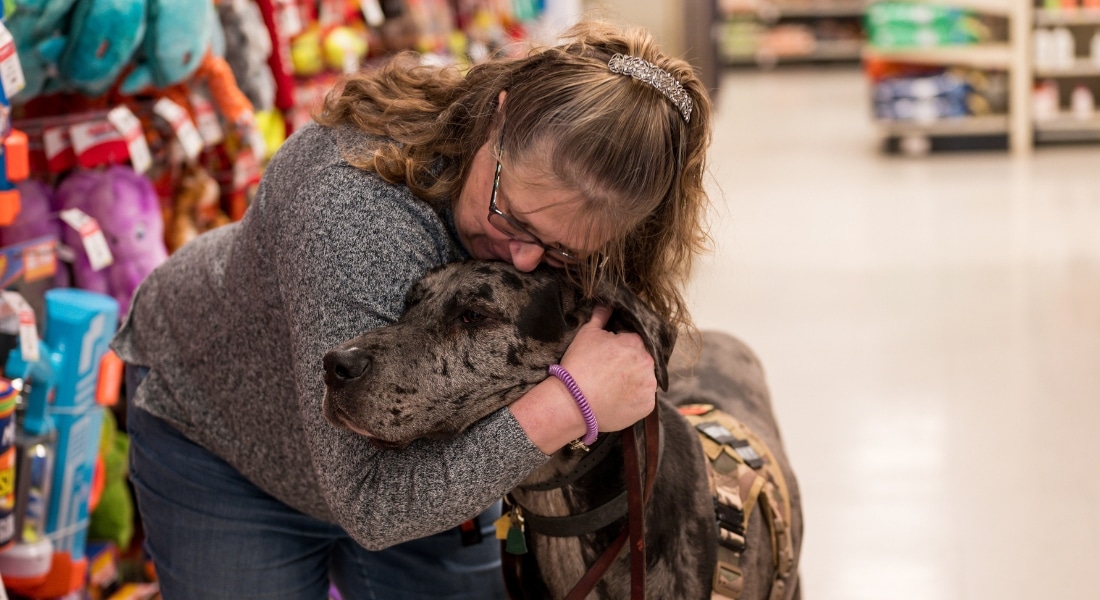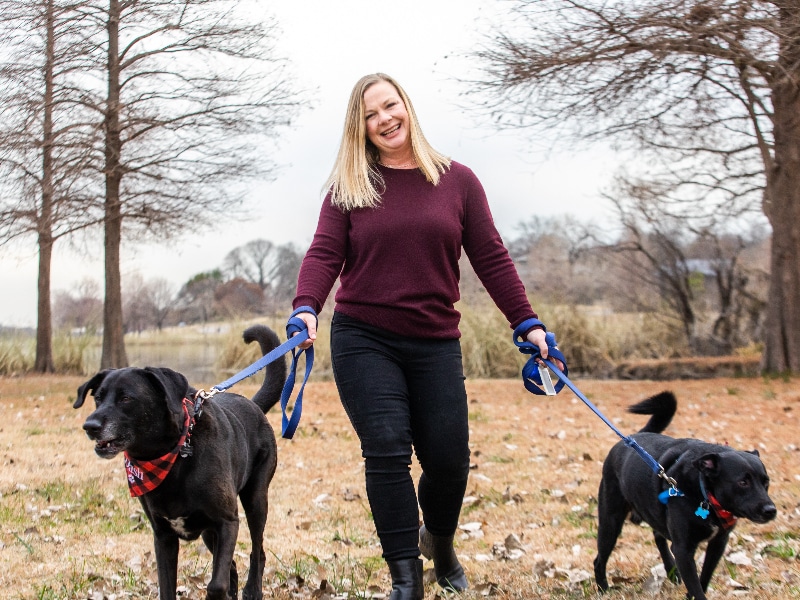Navy veteran Kim Rybka has put decades of debilitating back pain behind her after finding the relief she needed at Methodist Dallas Medical Center.
A series of disappointing spinal surgeries had left the 55-year-old Chicago native wondering whether her stooped posture, shooting leg pain, and limited mobility were her new normal. There were times she had to lean on her Great Dane for support. He would even pick up items for her.
“By 2021, I’d had two major back surgeries which caused serious infections and left me partially paralyzed,” says Kim, who now lives in Burleson. “I wasn’t confident there was a path forward, but decided to pursue a referral anyway.”
That referral — to Randall Graham, MD, neurosurgeon on the medical staff at Methodist Dallas — would prove to be crucial to finding the help she desperately needed.
A few days after her revision surgery in fall 2023, nurses helped Kim stand up straight for the first time in years, bringing tears to her eyes. She had regained a quality of life she never thought possible.
“Since my surgeries in October, I’ve regained feeling,” Kim says. “I can walk without crutches or a cane. And I can stand up straight for the first time in years.”
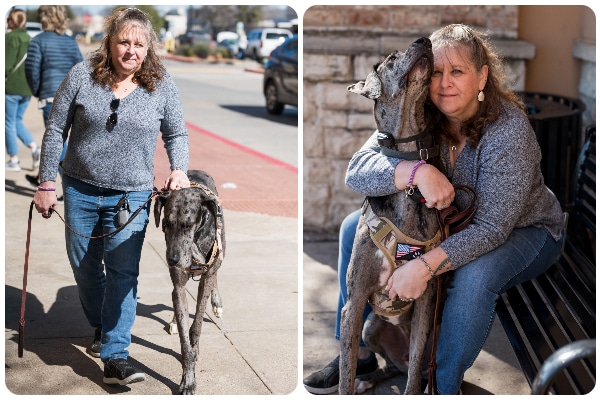
Kim and her Great Dane, Bentley Addison, are inseparable. Now she can walk him without pain.
STARTED WITH A BAD FALL
Kim first injured her back in the 1990s when she suffered a bad fall while working as a firefighter for the U.S. Navy.
“After being honorably discharged, I soon found myself as a single mother of two young boys living in Chicago,” she says. “I was working full-time as a paramedic and didn’t have time to find a doctor and figure out why I had lingering pain.”
By 2006, Kim had left her career as a first responder to become a medical assistant. She and her boys moved to Burleson, south of Fort Worth, to be near her family — all while she endured significant back pain.
“A few years after moving to Texas, I opted to get a pain pump implant hoping it would help manage my pain,” she says. “But over time I had to go back on oral pain meds to get relief.”
Years later, Kim decided she could not continue living that way and found a new primary care doctor, who discovered a surprising development in her back.
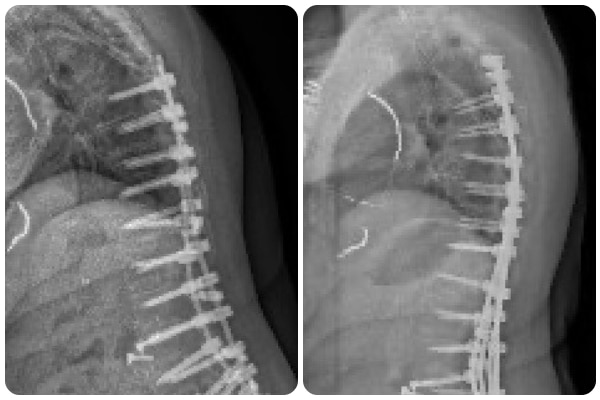
Before the surgery (left), Kim had a stooped posture, but now she can stand up straight again.
ADULT ONSET SCOLIOSIS
Until her diagnosis, Kim had never heard of degenerative scoliosis, but she was relieved to have a name for her pain.
Also known as adult-onset scoliosis, this sideways curvature of the spine is different from the disease normally associated with adolescent patients. The condition tends to affect the lower, or lumbar, spine and occurs when the facet joints and disks degenerate faster on one side of the spine than the other.
This can cause pinched nerves, herniated disks, and stenosis, a narrowing of the spinal canal. The solution for Kim involved two spinal fusion surgeries with another surgeon, one of which brought immediate relief — and a second that left her with no feeling from the waist down.
“I was told the partial paralysis ‘wasn’t unexpected’ and that it would take time for the feeling to come back,” she says. “Four months later, I’d only regained a little feeling back in my right leg.”
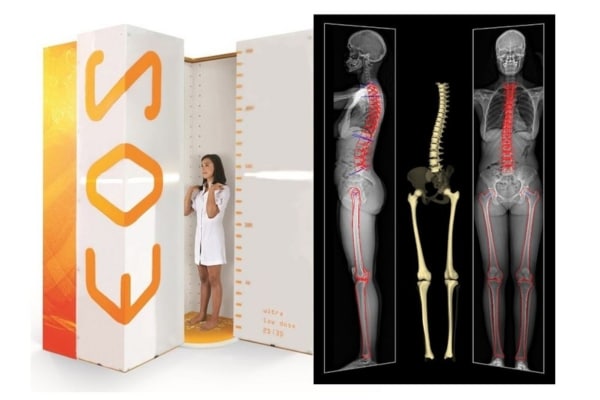
A 360-degree standing X-ray offers neurosurgeons a better look at the spine under stress.
LIFE-CHANGING REFERRAL
After a year of relentless physical therapy returned most of the feeling to her right leg, but little to her left, Kim again sought help. That’s when a pain specialist referred her to Dr. Graham.
“When I met Kim in June 2023, I was surprised she wasn’t in a wheelchair given what I knew of her condition,” Dr. Graham says. “Our first visit included a lengthy review of her medical history.”
Kim also underwent an advanced imaging scan with the EOS imaging system, an X-ray device that a patient stands up inside to create full-body, weight-bearing scans from the front and side.
“EOS gives me a 360-degree view of a patient’s spine in a standing position, which is incredibly useful in developing a treatment plan,” Dr. Graham says.
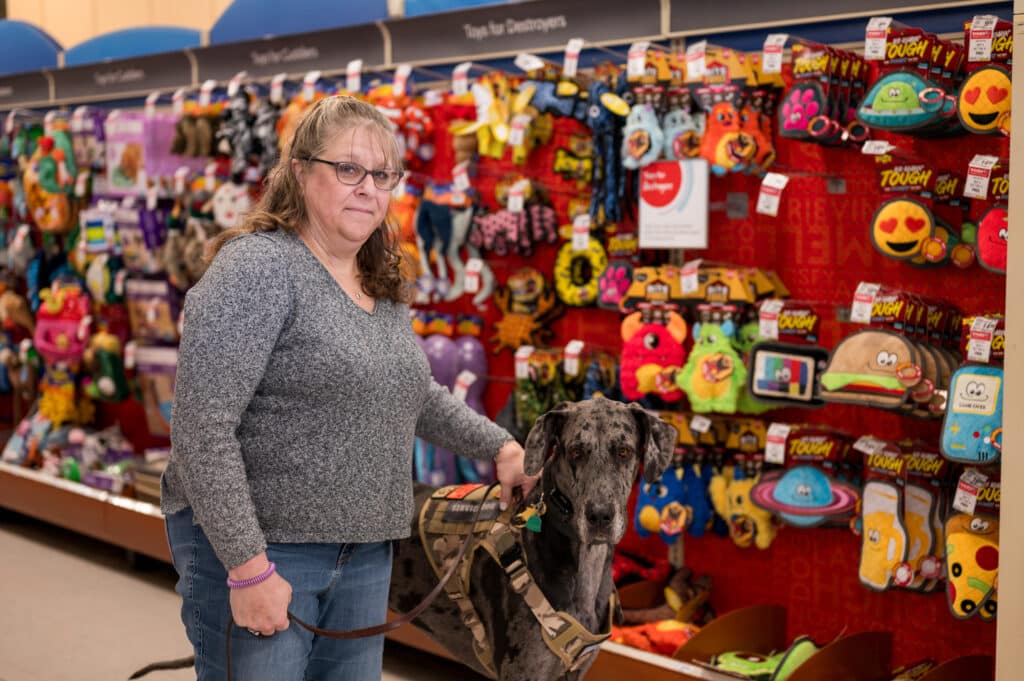
Kim has regained a quality of life she never thought possible after years of debilitating back pain.
QUICKER RECOVERY TIME
Kim had never had such a thorough discussion of her back, the proposed surgery and possible outcomes. After three visits, Kim was ready to say yes to a complex revision and reconstruction surgery that would take place over the course of two days.
Kim spent a week at Methodist Dallas after her surgery and says the entire staff was caring and attentive throughout her stay. Afterward, she returned to the same rehabilitation facility where she had recovered from her earlier surgeries. The staff was amazed at how quickly she recovered this time.
“I am profoundly grateful,” Kim says.
Dr. Graham says Kim deserves plenty of credit for her recovery and for placing her faith in his staff and Methodist Dallas.
“She took a leap of faith,” he says, “and we exceeded even our highest expectations.”

